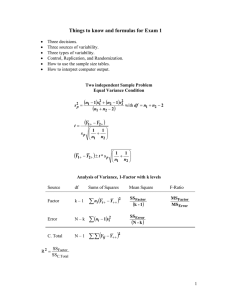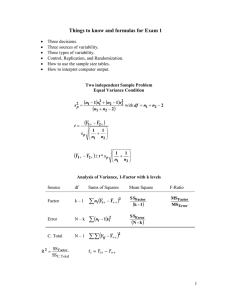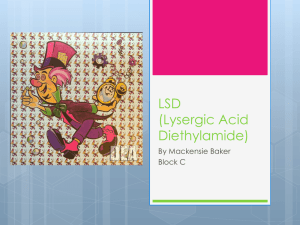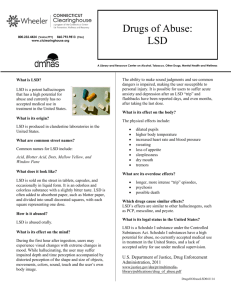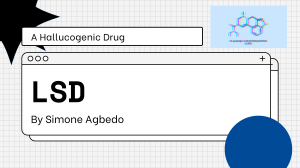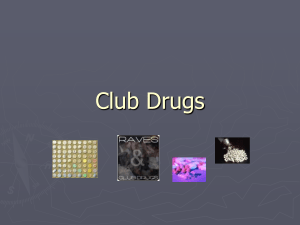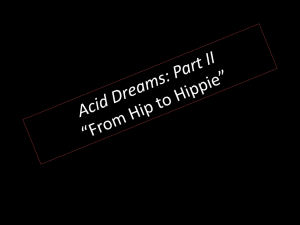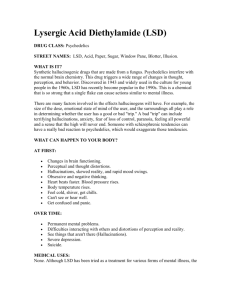LSD
advertisement
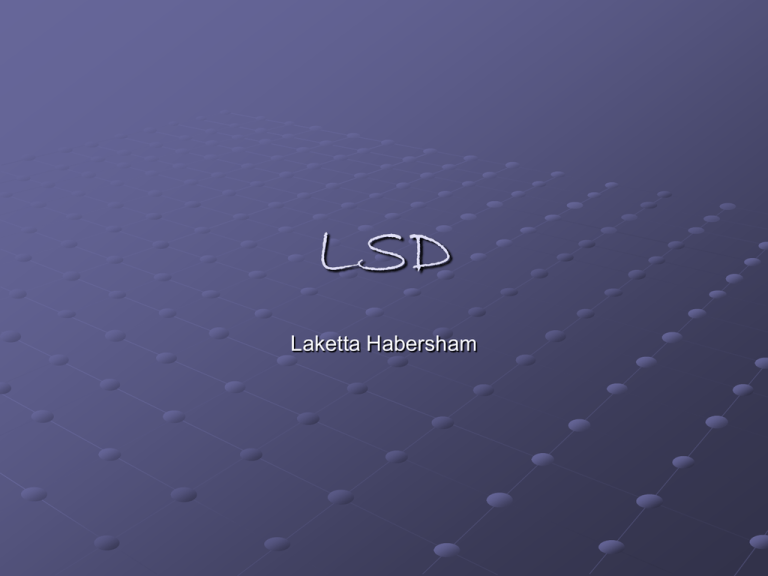
LSD Laketta Habersham History of LSD Chemical name: lysergic acid diethylamide Man-made; found in a fungus-ergot Street names: Back breaker, battery acid, dots, Elvis, Loonytoons, Lucy in the sky with diamonds, pane, superman, Window pane, Zen Most commonly known as acid What it does in the body Causes hallucinations Effects are unpredictable and depend on many factors The effects of LSD depend on the mental state of the user and what the user expects to feel Users refer to their experiences as a “trip” due to the up and down feelings while being on acid. Physical Effects Users feel lightheaded Lowered body temperature Dilated pupils Nausea & vomiting Increased heart rate Anxious feelings Paranoia LSD is generally taken by mouth on blotter papers or sugar cubes History of Acid Was first discovered by Albert Hofman in 1938 while looking for a circulatory and respiratory stimulant Hofman got high accidently; 5 years later did it intentionally-Bicycle Day 1948-introduced into US as a psychiatric cure-all/ schizophrenia 1963-first time drug appeared on streets 1967-banned in the US Timothy Leary advocated using the drug Leary was kicked out of Harvard for promoting the use of LSD “There are three side effects of acid: enhanced long-term memory, decreased short-term memory, and I forget the third” Timothy Leary The drug is a Schedule I Deemed to have a high potential for abuse It has no legitimate medical use in treatment There is a lack of accepted safety for its use under medical supervision LSD is Not an addictive drug Side Effects Users want to feel a change in mood A distorted sense of space and time Flashbacks Prolonged anxiety and depression after the drug is stopped Growing tolerance to the drug References www.usdoj.gov www.saps.gov www.nida.nih.gov www.streetdrugs.org www.erowid.org
